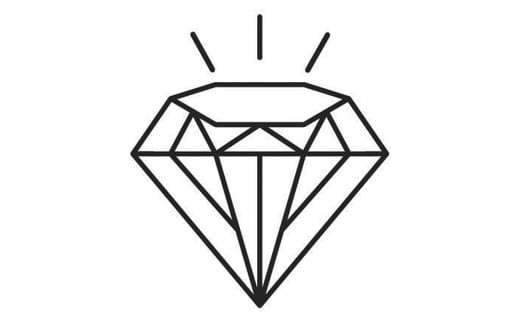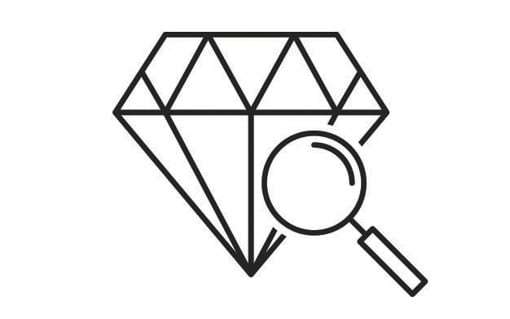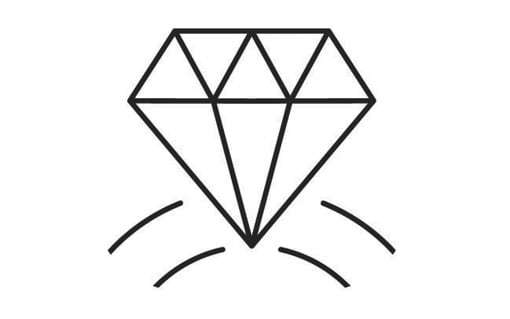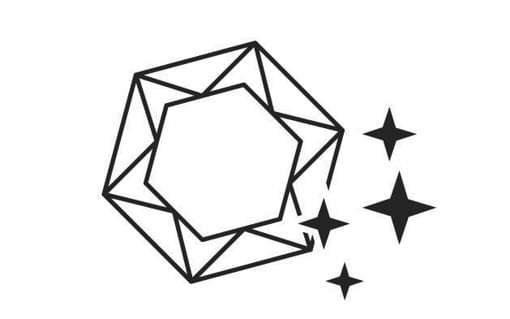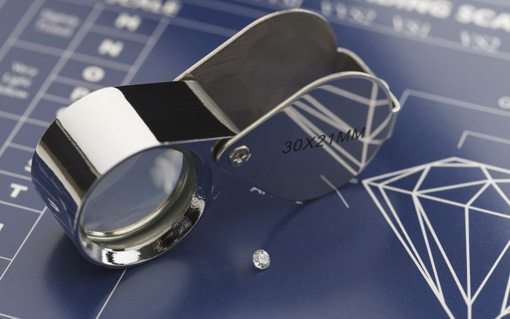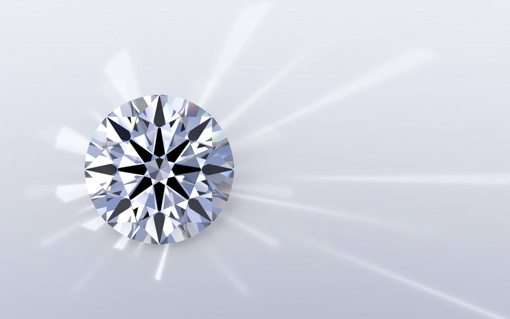Navigation:
→ What are the four C’s?
→ Colour
→ Clarity
→ Carat Weight
→ Cut
Understanding the past in order to re-shape the future of diamond knowledge
What are the Four C’s?
Up until the Mid-Twentieth Century, there was no universally agreed upon system for assessing diamond standards. It was then that the Gemological Institute of America (G.I.A) created the ‘Diamond 4C’s and the International Diamond Grading System’.
This was primarily created so that miners and polishers would have a common framework of language and understanding when trading diamonds.
The 4 C’s the G.I.A created are;
Changing The Narrative
Over time, the 4C’s discourse has dominated the socio-cultural landscape of diamond shopping, which has begun to feel somewhat stale and archaic when assisting a contemporary client with their forever diamond investment.
With innovative advances in technology surrounding jewellery design software combined with the rise in interest in lab grown diamonds and raw/ flawed stones, we feel it may be time to update the narrative from the 4 C’s to that of a more client-focused, human centric discussion perspective.
Crafted by Infinity a diamond cutting house based in Antwerp has gone as far as suggesting substituting the 4 C’s entirely with their 4B’s: “Brighter, Bigger, Bolder and more Beautiful.” The most significant focus should be placed upon a stone’s cut grade, that allows for a 4:1 investment that results in “More Fire, More Sparkle, and More Life!”
We at Durham Rose occupy a more neutral middle ground; we are more than happy to discuss your diamond in the vernacular the GIA have created, but find that most clients simply want to know;
- Is it Beautiful?
- Is it Affordable?
- Is it Ethical?
We often lead a new client with these design questions at the centre of our discussions, ensuring the clients have both the technical knowledge they should expect from a high-quality jeweller, complimented with the personal, human touch of a bespoke customer experience.
→ Return to Top
What is ‘Colour’?
Ironically diamond ‘colour’, actually refers to the absence of colour in the stone. A higher value diamond will have zero hue whereas those displaying a higher colouration will be of a less financial value.
The Gemological Institute of America (G.I.A) use a diamond colour grading system that ranges from D-to-Z, (as demonstrated in the image below) where D-F is colourless, G-J is near colourless, K-L has faint yellow presence and Z has a light yellow presence.
This measures the extent of colourlessness of a diamond under controlled inspection conditions due to a large quantity of the distinctions in colour being minute, and often invisible to the naked eye. However, when diamonds are formed with traces of other minerals this can result in unique and beautiful colours.
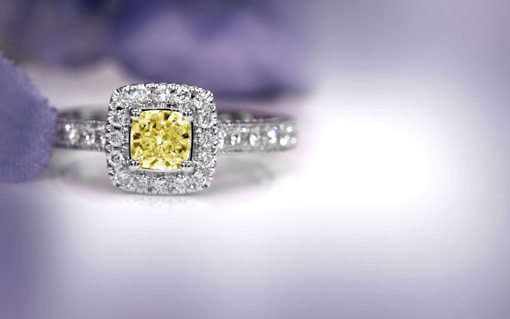
Fancy coloured diamonds
Fancy diamond colours range from blue to brilliant yellow, red, brown, pale green, pink, and violet. Because of they’re the rarity, coloured diamonds are highly desirable and often more valuable.
We have a page dedicated to ‘fancy’ coloured diamonds; click here to learn more.
“Colour; Learn more about your stone’s colouring with Durham Rose’s coloured diamonds guide.”
→ Return to Top
What is ‘Clarity’?
A diamond’s clarity is measured by the existence – or absence – of visible flaws. During the growth process of a diamond, a variety of internal characteristics called ‘inclusions’ and external characteristics called ‘blemishes’ can occur; almost like a natural birthmark. When assessing the clarity of a diamond, the overall appearance and value of the stone will depend upon the number, shape, size and position of inclusions and blemishes. The chart below gives you an insight of how a stone is graded depending on their inclusions/ blemishes with the highest possible outcome being FL: Flawless, which is exceptionally rare.
- Flawless (FL) – No inclusions or blemishes are visible to a skilled grader using 10× magnification
- Internally Flawless (IF) – No inclusions and only blemishes are visible to a skilled grader using 10× magnification
- Very, Very Slightly Included (VVS1 and VVS2) – Inclusions are difficult for a skilled grader to see under 10× magnification
- Very Slightly Included (VS1 and VS2) – Inclusions are minor and range from difficult to somewhat easy for a skilled grader to see under 10x magnification
- Slightly Included (SI1 and SI2) – Inclusions are noticeable to a skilled grader under 10x magnification
- Included (I1, I2, and I3) – Inclusions are obvious under 10× magnification and may affect transparency and brilliance

“Clarity; Learn more about the anatomy of a diamond with Durham Rose’s guide.”
→ Return to Top
What is Carat Weight?

If you need any further information on any of The Four C’s or Diamond Carat Weight knowledge; get in touch with one of our consultants, who are more than willing and ready to help.
→ Return to Top
What is ‘Cut’?
The G.I.A, in 2006, as a by-product of a manufacturing opportunity introduced the fourth C to the lexicon of Diamond Grading: ‘Cut’. They define ‘cut’ as ‘cut grade’ which is the way a diamond has been cut to maximize the way a diamond’s facets interact with light, creating the archetypal ‘sparkle’ associated with a diamond. This is then further enhanced by the way in which the stone’s proportions and symmetry are integrated into the stones cut and polish. If a diamond exhibits a poor cut grade, it will ‘leak’ light creating a dull, dim appearance.
The first decision to make when choosing a diamond is what shape and style of cut you prefer. When we talk about shape this just refers to the outline shape of the stone, this is actually nothing to do with the ‘cut grade’. The cutting styles are divided into two main groups- Brilliant cut, this is where the stone has a kite or triangular shaped facets radiating from a central point. Examples of this would be the standard round brilliant, oval, pear, marquise, princess, cushion and radiant cuts. The other style is step cut, this means the facets are cut into rectangular shapes parallel to the girdle on the crown and pavilion. Examples of this are emerald, asscher and baguette cuts. You can also get mixed cuts which could have a brilliant cut crown and step cut pavilion or vice versa.
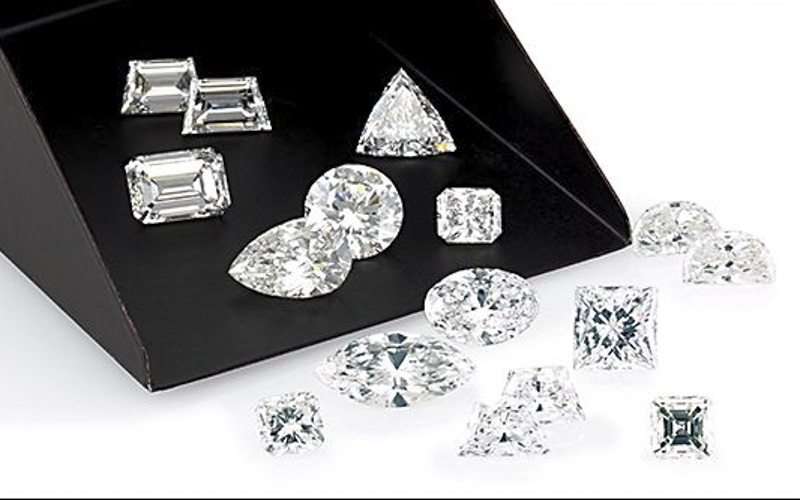
To explain further, Brightness refers to the combination of the white light reflected from the surface and inside surfaces of the diamond. Fire refers to the dispersion of white light into the spectral colours, this is why you would see colours of the rainbow reflected back to you. Scintillation refers to the pattern of light and dark areas you see when the diamond, the light or the observer moves.
The specific cut proportions and angles play a dramatic part in how the light performs when it strikes a diamond. When light strikes a diamond it either reflects off the surface; if it reflects back the viewer would see it as a flash of white light which would be part of the brilliance of the diamond. If the light enters the diamond it slows down and could change direction which means it is refracted. The light ray could then strike an interior surface and either continue being reflected off the inside surfaces and back or it will exit the diamond straight away. If the light reflects throughout the diamond and back up some of it could disperse into the spectral colours (fire) and others will reflect as white light. The way these factors work with each other and ‘sparkle’ when the diamond, light source or viewer moves is the scintillation and overall brilliance of the diamond. The measure of the speed at which the light enters the diamond and bends is called the refractive index.
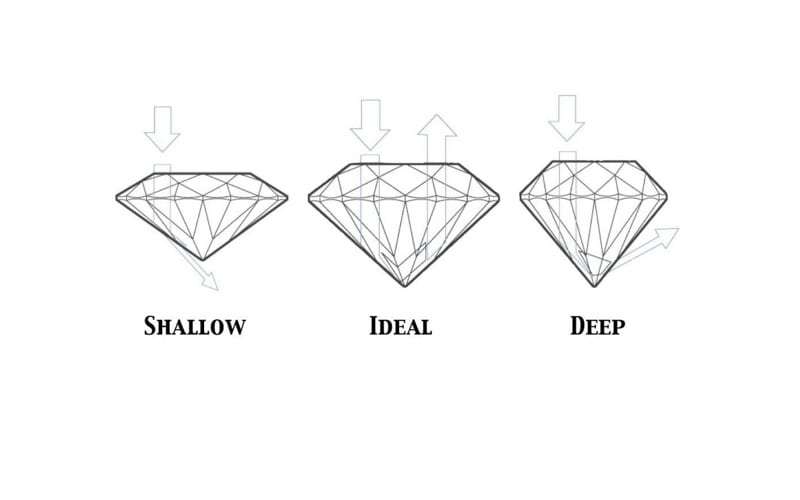
Why Is Cut Grade Important?
We at Durham Rose, are continually challenging what is considered the ‘best’ cut for each individual stone and client, which is why we are now exclusively providing our clients with Crafted by Infinity diamonds. They specialise in the highest possible precision cut diamonds that surpass the G.I.A ’s broad scope of ‘excellent’.
Diamond values, in today’s climate, are heavily based on the traditional 4 C’s with significant emphasis being weighted upon carat weight and colour. However, with the advancing knowledge surrounding cut-awareness and grading, the future value of a diamond will evolve to become based on new cut-criteria, which we at Durham Rose firmly believe should have far more prominence in the equation.
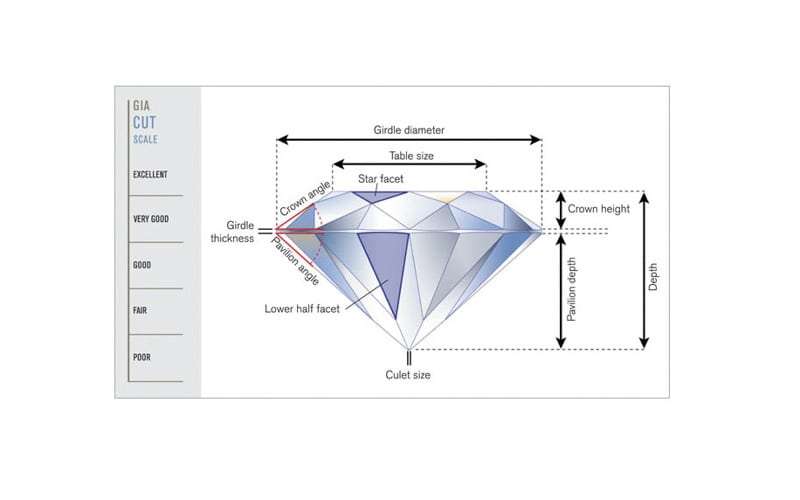
We feel that after speaking to a professional about this topic, as well as the other ‘C’s’, you will come away with a far less conflicted opinion and feel confident in your diamond decision.
While it is important to consider many components when assessing the cut grade appearance and quality of a diamond, your personal preference plays the most important role.
→ Return to Top





